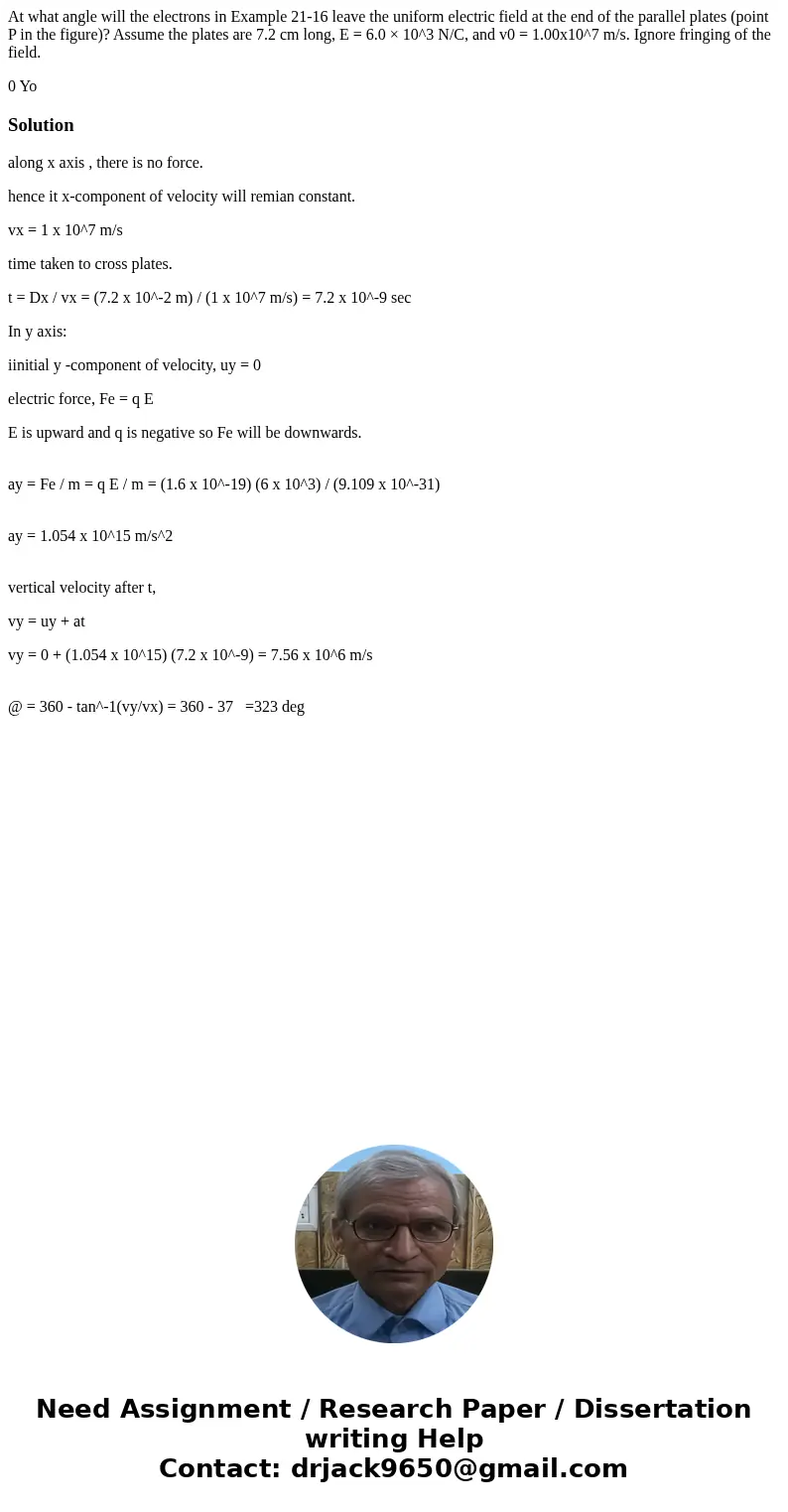At what angle will the electrons in Example 2116 leave the u
At what angle will the electrons in Example 21-16 leave the uniform electric field at the end of the parallel plates (point P in the figure)? Assume the plates are 7.2 cm long, E = 6.0 × 10^3 N/C, and v0 = 1.00x10^7 m/s. Ignore fringing of the field.
0 YoSolution
along x axis , there is no force.
hence it x-component of velocity will remian constant.
vx = 1 x 10^7 m/s
time taken to cross plates.
t = Dx / vx = (7.2 x 10^-2 m) / (1 x 10^7 m/s) = 7.2 x 10^-9 sec
In y axis:
iinitial y -component of velocity, uy = 0
electric force, Fe = q E
E is upward and q is negative so Fe will be downwards.
ay = Fe / m = q E / m = (1.6 x 10^-19) (6 x 10^3) / (9.109 x 10^-31)
ay = 1.054 x 10^15 m/s^2
vertical velocity after t,
vy = uy + at
vy = 0 + (1.054 x 10^15) (7.2 x 10^-9) = 7.56 x 10^6 m/s
@ = 360 - tan^-1(vy/vx) = 360 - 37 =323 deg

 Homework Sourse
Homework Sourse